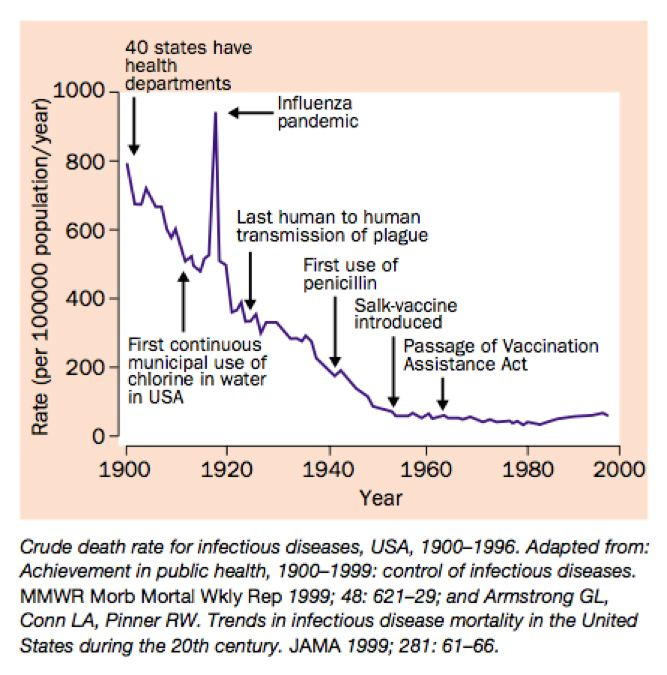Lies, damned lies and statistics
There have been many comments since I originally posted Dr Obomsawin's original graphs and subsequent response. A lot of people are saying that we should not be looking at the death rates from infectious diseases. Rather, since vaccines are meant to prevent the diseases themselves, the incidence should be the bar we use to measure their success.
In theory, that sounds like a good idea. In actuality however, it doesn't work.
You see, incidence tends to be a very subjective and inaccurate measure. For instance in 1998, a study was done to determine how accurately doctors were diagnosing cases of measles. It turned out that 97.5% of what doctors were calling measles wasn't measles at all. In other words, they were only right 2.5% of the time.
97.5% of Measles Diagnoses are Incorrect
From Europe Today, April 1998 comes an interesting report about the level of error occurring in the diagnosis of measles. The feedback comes from the UK's Public Health Laboratory Service, which found that 97.5% of the time, British doctors are wrong in their diagnosis of measles. This conclusion was reached after saliva tests were performed on 12,000 person diagnosed with measles. Roger Buttery, an advisor on transmissible diseases at the Cambridge and Huntingdon Health Department, said "a majority of doctors say they can recognize measles 'a mile off' but we now know that this illness occurs in only 2.5% of the cases." If the information offered by Buttery et al. is correct, then the true incidence of measles in the UK is not the reported 6,000 per year, but more like 150.
Professor Gordon Stewart who published widely on the problems with the pertussis (whooping cough) vaccine in the UK in the 1970s and 1980s said that during the time when parents were questioning the safety of the pertussis vaccine and vaccination rates plummeted, all you needed to do was go to the doctor with a runny nose and you would be diagnosed with whooping cough.
Here in Australia, there are long periods of time - decades in some cases - where we were not tracking the incidence of these infectious diseases but were still tracking mortality. The same holds true for many other developed countries.
In addition, for many diseases, the criteria for being diagnosed with the illness includes not having received the vaccine. So if, for example, you have been vaccinated against measles and then come down with the symptoms of the disease, you are less likely to be diagnosed with measles simply because of your vaccination status even though we know that the vaccine does not provide perfect protection.
When the polio vaccine was introduced, anyone who had been vaccinated within 30 days of developing symptoms was automatically excluded. In addition, the paralysis needed to involve more limbs and last for a far longer time then had been necessary for a clinical diagnosis prior to the introduction of the polio vaccine.
Using incidence alone to determine the effectiveness of vaccination is at best inaccurate - at worst - deceptive.
Mortality statistics are more accurate
Death rates provide a much better picture of how a disease is declining over time since there is almost always some form of testing done to determine the cause of death.
And consistently, in every developed country, we see that the vast majority - 90% and more - of the death rate from these diseases occurred before the introduction of the vaccines to prevent them. Even antibiotics didn't seem to do much to prevent these deaths. It seems that engineers had far more to do with the decline in mortality and morbidity in the first half of the 20th century than doctors.
Please view the following graphs from New Zealand and ask yourself why we are still being told that the vaccines for measles, pertussis or diphtheria had any effect at all in reducing deaths from these diseases:
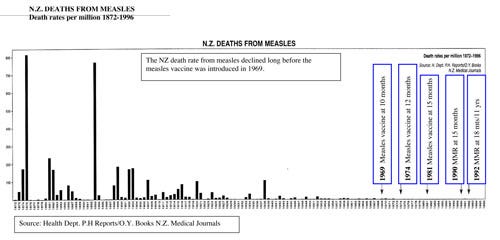
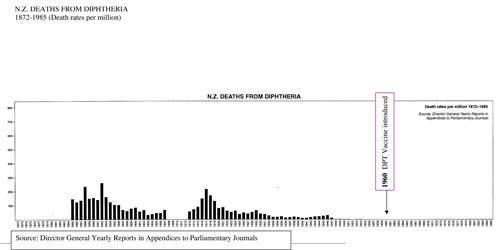
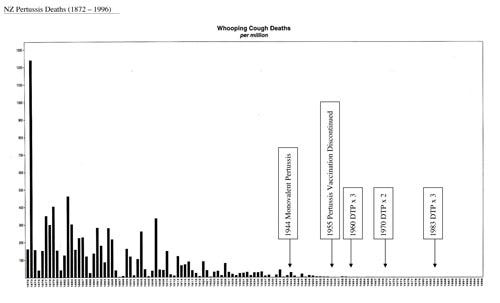
There are many similar graphs from medical journals that demonstrate the same exact trends - high levels of mortality or morbidity in the 1800s declining through the first half of the 1900s to the point where vaccines were introduced when they were historically already at their lowest level.
Please see the following graph from What is the evidence for a causal link between hygiene and infections?; Allison E Aiello and Elaine L Larson; THE LANCET Infectious Diseases Vol 2 February 2002; http://infection.thelancet.com. The US made vaccination compulsory in 1978. As you can see, vaccination had nothing to do with the massive decline in mortality from infectious diseases.
Please note the increase in mortality from the early 1980s. Much of this increase is from HIV AIDS mortality. Ironically, this may be the one way in which vaccinations have influenced infectious disease mortality - by the increase in deaths from AIDS - a disease which may have had its origin in contaminated vaccines. (http://www.uow.edu.au/~bmartin/dissent/documents/AIDS/refs.html)
The following information which shows a very similar trend is from Trends in Infectious Disease Mortality in the United States During the 20th Century; Gregory L. Armstrong; Laura A. Conn; Robert W. Pinner; JAMA. 1999;281(1):61-66
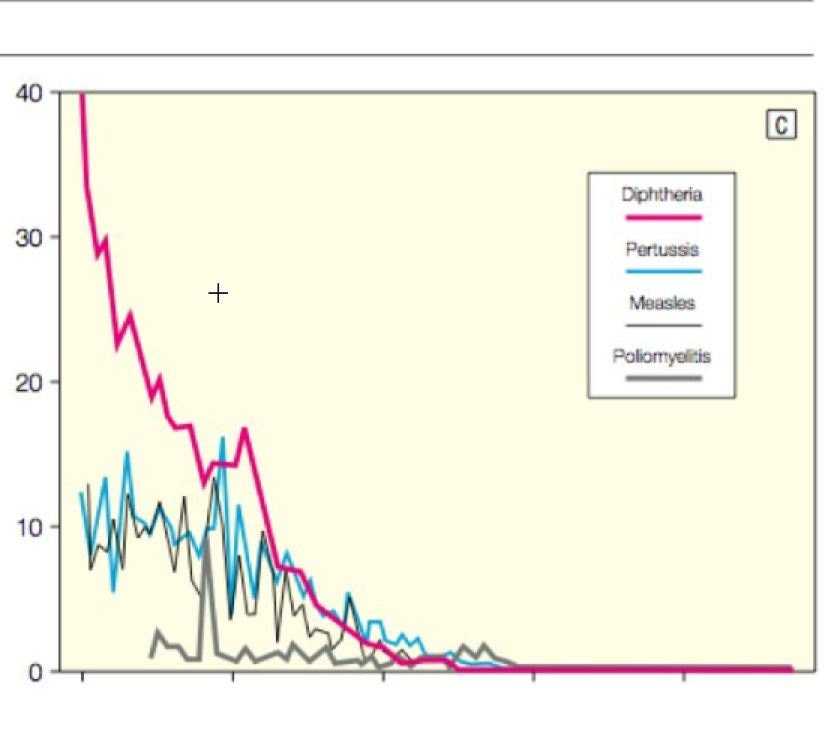
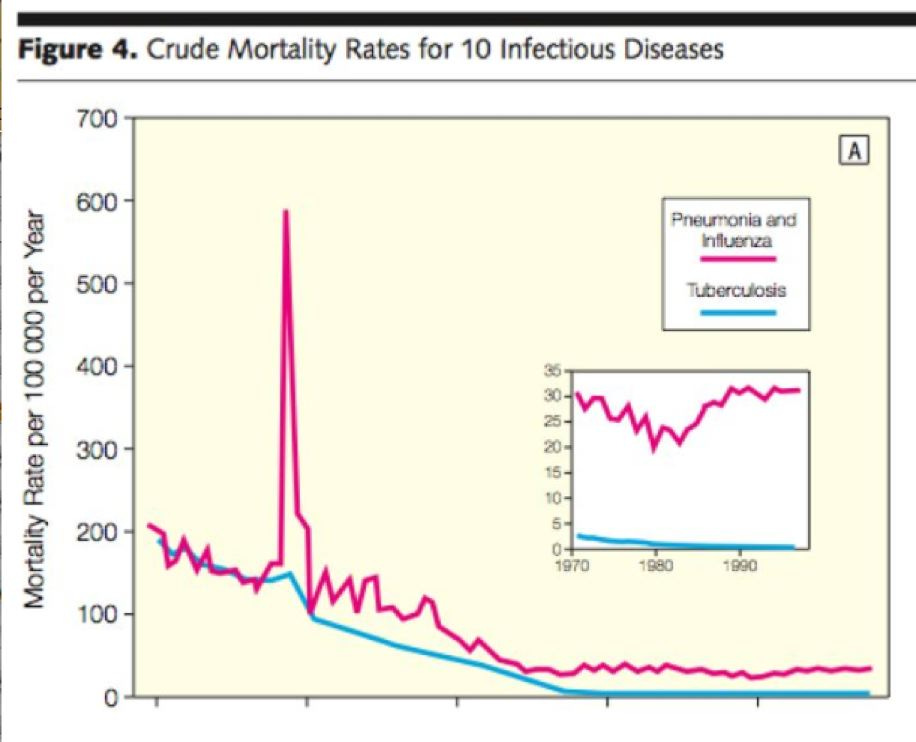
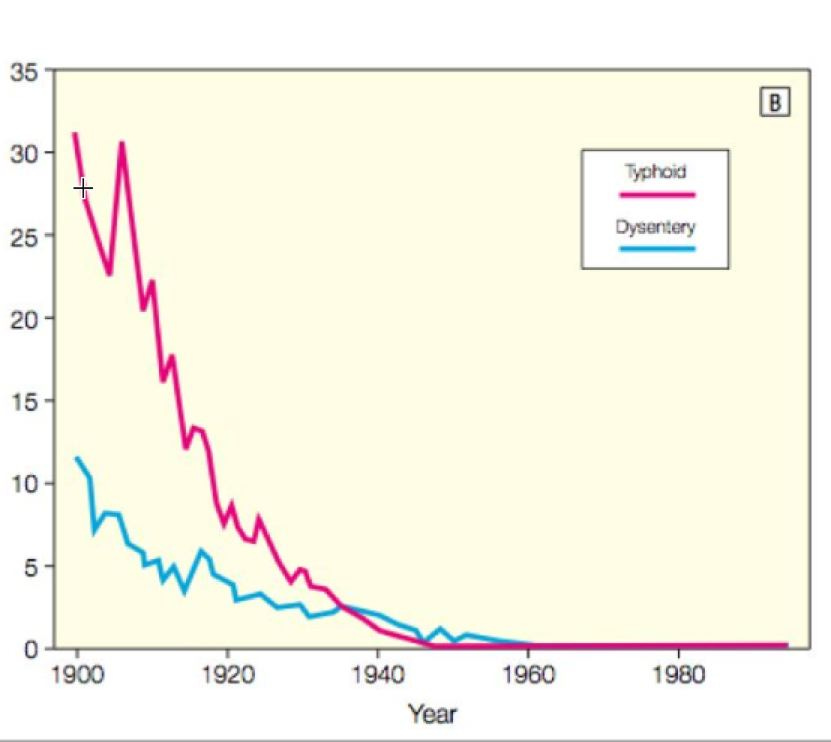
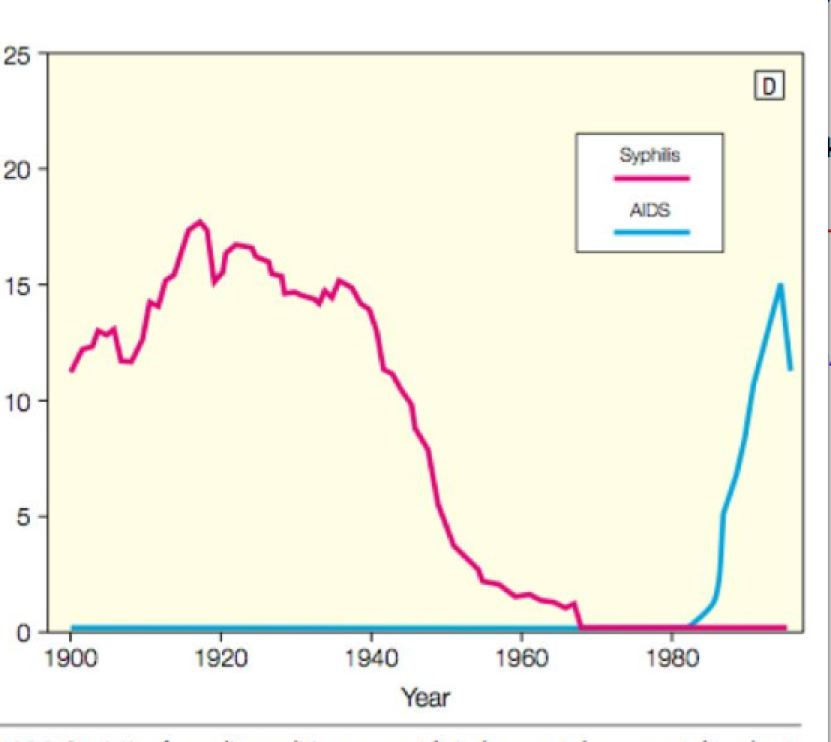
Is this evidence that vaccines were involved in any way with the decline in these diseases? With the exception of polio (which is another story because the diagnostic criteria for polio changed as soon as the vaccine was licensed, leading to a huge decline in cases virtually overnight) it is obvious that vaccinations had NOTHING to do with the improvement in infectious diseases statistics for the last 100 years.
Those critics who have been talking about the gap in Dr Obomsawin's graph and the smoothing of his lines are trying to put up a smoke screen to hide what the can't dispute - the fact that the scientific evidence demonstrates very clearly that vaccinations did not cause the decline in deaths from infectious diseases that the Western world experienced over the last 100 years or more.
One has to wonder whether, were we to export the technology for clean water, efficient food growth and proper sanitation to developing countries instead of vaccines, we might see the sharp decline in deaths from these diseases there as well?




